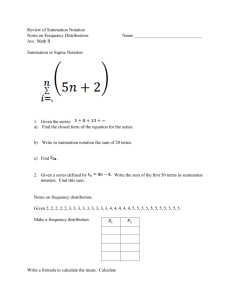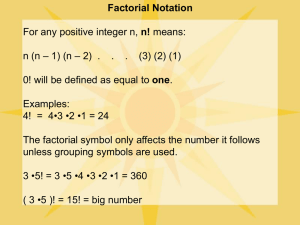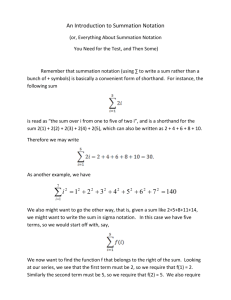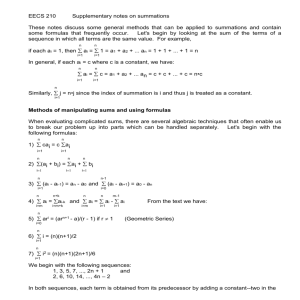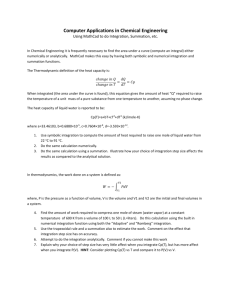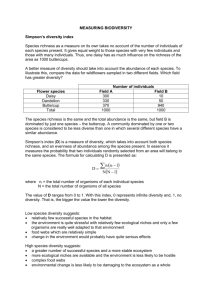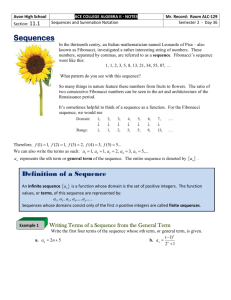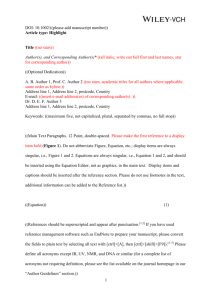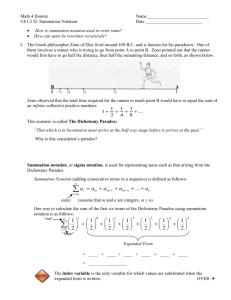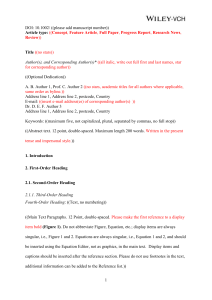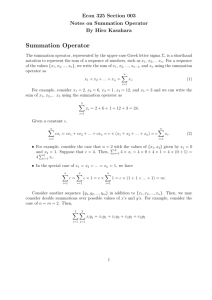Summations
advertisement
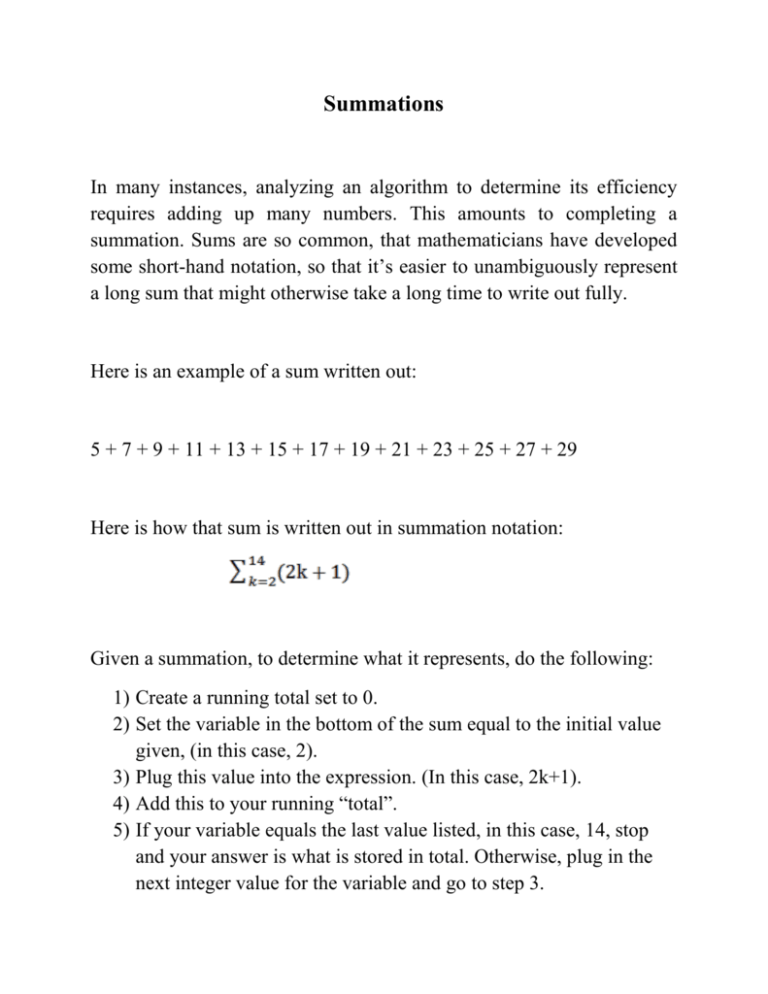
Summations In many instances, analyzing an algorithm to determine its efficiency requires adding up many numbers. This amounts to completing a summation. Sums are so common, that mathematicians have developed some short-hand notation, so that it’s easier to unambiguously represent a long sum that might otherwise take a long time to write out fully. Here is an example of a sum written out: 5 + 7 + 9 + 11 + 13 + 15 + 17 + 19 + 21 + 23 + 25 + 27 + 29 Here is how that sum is written out in summation notation: Given a summation, to determine what it represents, do the following: 1) Create a running total set to 0. 2) Set the variable in the bottom of the sum equal to the initial value given, (in this case, 2). 3) Plug this value into the expression. (In this case, 2k+1). 4) Add this to your running “total”. 5) If your variable equals the last value listed, in this case, 14, stop and your answer is what is stored in total. Otherwise, plug in the next integer value for the variable and go to step 3. In code, we would have something like this: int total = 0; for (k=2; k<=14; k++) total += (2*k+1); In general, we would say the following: where a is less than or equal to b and both are integers. The very first sum for which we can get a formula is as follows: because we are adding c exactly b – a + 1 times and repeated addition is multiplication. Now, let’s consider a more difficult sum: S = 1 + 2 + 3 + 4 + … + (n-1) + n Our answer will be in terms of n. A nifty trick that will help us is pretending that we want to add the numbers backwards. Now, if we add up both of these equations, we notice a peculiar simplification for the sum of each column: S=1+ 2 + 3 + 4 + … + (n-1) + n S = n +(n-1) + … +2 +1 ---------------------------------------------2S = (n+1) + (n+1) + … +(n+1) + (n+1) 2S = n(n+1) S = n(n+1)/2 What we notice is that each column adds up to the same exact thing! The reason for this is that to move from column to column, we add 1 on the top row, and subtract 1 from the bottom row. This net movement (+1, 1) amounts to no net gain or loss. So, if the sum of the values in the first column is n+1, the sum of the values in the second column must be as well. Since there are n columns, we get n(n+1) when we add up all of these numbers. We get the final result when we divide by 2. In summation notation we have: Now, let’s look at a few quick uses of this formula: The next formulas that we will examine are , where c is constant with respect to k. The reason this is true is because we can always factor out a constant in all terms of a sum. For example, 3(4) + 3(5) + 3(6) = 3(4 + 5 + 6), using factoring. The first is a sum with the 3 inside each term, while the sum is a sum that is then multiplied by 3. Here are quick examples that use these rules: Another situation that might occur is that a sum might not start at 1. Consider the following situation: This can be re-expressed as: The reason this works is that the first sum has every term in it, from f(1) to f(40). But, this is too much!!! We don’t WANT to add f(1), f(2), …, f(19). We can offset this problem by subtracting these terms out! More generally, the formula we have is as follows (notice the a-1…): Consider the following example: Here is a final example that puts together all of the ideas:


